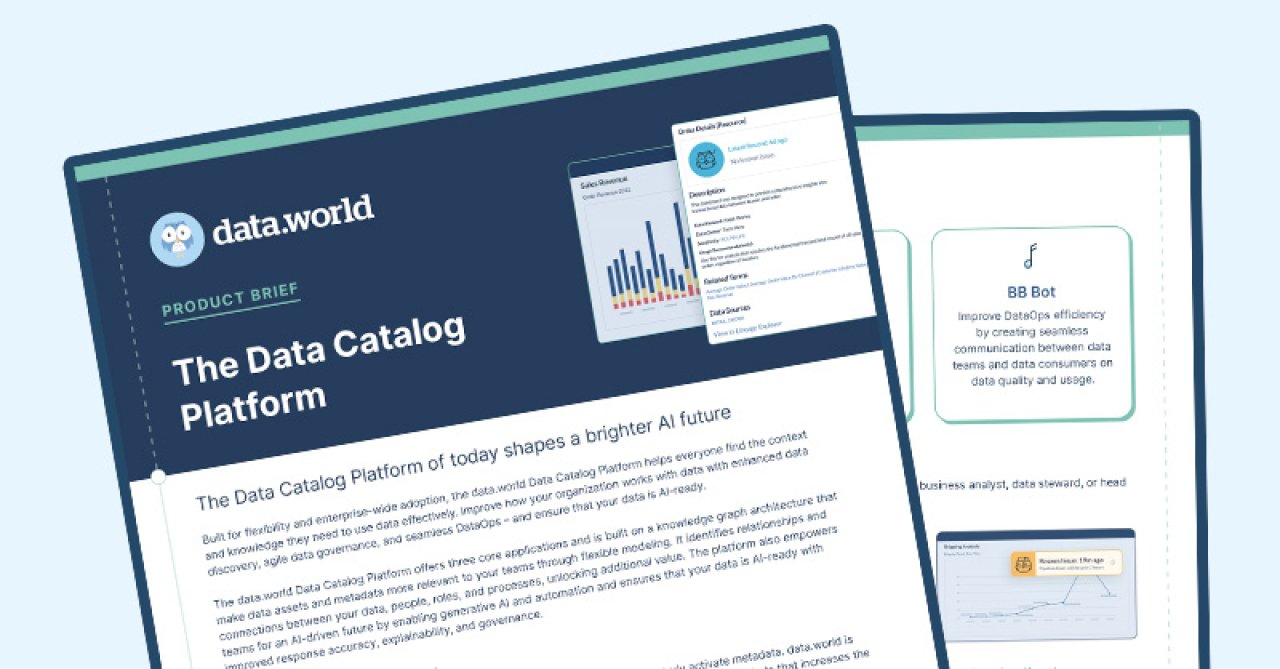







Sep 27, 2024

Jason Guarracino
Generative AI Product Leader

As application developers and solution architects, we're constantly pushing the boundaries of what's possible in software. We've ridden the waves of mobile computing, cloud technologies, and now AI. But as we integrate more AI into our applications, we're encountering a new challenge: how do we make our AI truly understand the context in which it operates?
Traditional AI has revolutionized our applications, from recommendation systems to predictive maintenance. However, these systems often fall short when faced with complex, real-world scenarios that require a nuanced understanding of context. They excel at pattern recognition but struggle with the subtle interplay of factors that humans intuitively grasp.
Consider a smart home application. A traditional AI might turn on the heating when it detects a drop in temperature. But what if the homeowner is on vacation? Or what if it's a brief cold snap on an otherwise warm day? These are the kinds of contextual nuances that our current AI struggles with, often leading to user frustration and inefficiencies.
Context Engines represent a fundamental shift in how we approach AI in our applications. At their core, Context Engines are sophisticated systems that integrate diverse data sources, understand complex relationships, and provide insights deeply rooted in the specific context of the application and its users.
Unlike traditional AI systems that rely on predefined rules and pattern matching, Context Engines leverage advanced knowledge graphs and semantic understanding. This allows them to create a rich, interconnected web of information that more closely mimics human understanding.
One of the most critical aspects of Context Engines is their ability to eliminate AI hallucinations – those confident but incorrect outputs that plague many AI systems. As our CTO, Bryon Jacob, points out in a recent post, "The real solution lies in connecting AI to governed facts, ensuring that its outputs are not just accurate by chance but rooted in a foundation of verifiable, real-world knowledge."
This approach involves building and maintaining a robust Knowledge Graph that represents real-world entities and their relationships. Coupled with a comprehensive Data Catalog, this creates a foundation of governed, validated, and up-to-date facts that the AI can rely on. It's not just about recognizing entities; it's about knowing what you know and how you know it to be true.
One of the most exciting aspects of context engines for us as developers is their ability to understand and process queries that span multiple domains. Imagine building a business intelligence application that can seamlessly integrate data from finance, marketing, and operations to answer complex queries.
For example, a query like "How did our recent marketing campaign affect sales in regions experiencing economic downturns?" would typically require multiple separate analyses. A context engine, however, can understand the relationships between these different domains and provide a comprehensive answer, taking into account the nuances of each area.
This capability opens up new possibilities for creating more intelligent, integrated applications that can provide users with deeper, more actionable insights.
Another game-changing feature of context engines is their advanced natural language understanding capabilities. This goes beyond simple keyword matching or intent recognition. Context Engines can understand the nuances of human language, including context, tone, and even cultural references.
For chatbots and virtual assistants, this means creating more natural, human-like interactions. Users can phrase their queries in a variety of ways, and the Context Engine will understand the intent, even if it's never encountered that exact phrasing before.
In data analysis applications, natural language querying becomes far more powerful. Users can ask complex questions in plain language and receive accurate, contextually relevant answers. This democratizes data analysis, making it accessible to non-technical users across an organization.
Integrating a context engine into your application architecture requires careful planning. Here are some best practices to consider:
Start with a clear use case: Identify where contextual understanding will add the most value in your application.
Data integration strategy: Plan how you'll integrate various data sources into your Context Engine.
Knowledge graph design: Work with domain experts to create a comprehensive knowledge graph that accurately represents your application's domain.
Continuous learning: Implement mechanisms for the Context Engine to learn and adapt based on user interactions and new data.
Privacy and security: Ensure that your implementation complies with data protection regulations and maintains user privacy.
One of the main challenges you might face is the initial complexity of setting up a context engine. It requires a significant upfront investment in data integration and knowledge graph creation. However, the long-term benefits in terms of application intelligence and user satisfaction often outweigh these initial costs.
Let's look at some exciting potential implementations of Context Engines across different industries:
E-commerce: A major online retailer implements a Context Engine to power their product recommendation system. By understanding the context of user searches, including factors like current trends, user location, and even weather, they see a 35% increase in click-through rates on recommended products.
Healthcare: A hospital management system uses a Context Engine to improve patient care. By integrating patient history, current symptoms, latest research, and even social determinants of health, the system provides doctors with a holistic view of each patient, leading to more accurate diagnoses and personalized treatment plans.
Smart Cities: A traffic management application powered by a Context Engine in a large metropolitan area reduces average commute times by 20%. The system considers not just current traffic conditions, but also weather forecasts, scheduled events, and historical patterns to optimize traffic flow in real-time.
As we look to the future, it's clear that context engines will play a crucial role in the next generation of intelligent applications. We're moving towards a world where AI doesn't just respond to commands but truly understands and anticipates user needs based on a deep, contextual understanding.
To prepare for this shift, focus on developing a deep understanding of knowledge graphs, data discovery, and semantic web technologies. Familiarize yourself with natural language processing techniques that go beyond simple intent recognition. And most importantly, start thinking about how you can incorporate contextual understanding into your current projects.
The era of context-aware AI is here, offering exciting new possibilities for creating smarter, more intuitive applications. As developers and architects, we have the opportunity to lead this revolution, crafting applications that don't just process data, but truly understand it.
Start exploring how you can integrate context engines into your projects today. Whether it's enhancing a chatbot with more nuanced understanding, creating a more intelligent data analysis tool, or building a completely new application that leverages contextual AI, the possibilities are endless.
The future of application development is context-aware and grounded in verifiable facts.

As application developers and solution architects, we're constantly pushing the boundaries of what's possible in software. We've ridden the waves of mobile computing, cloud technologies, and now AI. But as we integrate more AI into our applications, we're encountering a new challenge: how do we make our AI truly understand the context in which it operates?
Traditional AI has revolutionized our applications, from recommendation systems to predictive maintenance. However, these systems often fall short when faced with complex, real-world scenarios that require a nuanced understanding of context. They excel at pattern recognition but struggle with the subtle interplay of factors that humans intuitively grasp.
Consider a smart home application. A traditional AI might turn on the heating when it detects a drop in temperature. But what if the homeowner is on vacation? Or what if it's a brief cold snap on an otherwise warm day? These are the kinds of contextual nuances that our current AI struggles with, often leading to user frustration and inefficiencies.
Context Engines represent a fundamental shift in how we approach AI in our applications. At their core, Context Engines are sophisticated systems that integrate diverse data sources, understand complex relationships, and provide insights deeply rooted in the specific context of the application and its users.
Unlike traditional AI systems that rely on predefined rules and pattern matching, Context Engines leverage advanced knowledge graphs and semantic understanding. This allows them to create a rich, interconnected web of information that more closely mimics human understanding.
One of the most critical aspects of Context Engines is their ability to eliminate AI hallucinations – those confident but incorrect outputs that plague many AI systems. As our CTO, Bryon Jacob, points out in a recent post, "The real solution lies in connecting AI to governed facts, ensuring that its outputs are not just accurate by chance but rooted in a foundation of verifiable, real-world knowledge."
This approach involves building and maintaining a robust Knowledge Graph that represents real-world entities and their relationships. Coupled with a comprehensive Data Catalog, this creates a foundation of governed, validated, and up-to-date facts that the AI can rely on. It's not just about recognizing entities; it's about knowing what you know and how you know it to be true.
One of the most exciting aspects of context engines for us as developers is their ability to understand and process queries that span multiple domains. Imagine building a business intelligence application that can seamlessly integrate data from finance, marketing, and operations to answer complex queries.
For example, a query like "How did our recent marketing campaign affect sales in regions experiencing economic downturns?" would typically require multiple separate analyses. A context engine, however, can understand the relationships between these different domains and provide a comprehensive answer, taking into account the nuances of each area.
This capability opens up new possibilities for creating more intelligent, integrated applications that can provide users with deeper, more actionable insights.
Another game-changing feature of context engines is their advanced natural language understanding capabilities. This goes beyond simple keyword matching or intent recognition. Context Engines can understand the nuances of human language, including context, tone, and even cultural references.
For chatbots and virtual assistants, this means creating more natural, human-like interactions. Users can phrase their queries in a variety of ways, and the Context Engine will understand the intent, even if it's never encountered that exact phrasing before.
In data analysis applications, natural language querying becomes far more powerful. Users can ask complex questions in plain language and receive accurate, contextually relevant answers. This democratizes data analysis, making it accessible to non-technical users across an organization.
Integrating a context engine into your application architecture requires careful planning. Here are some best practices to consider:
Start with a clear use case: Identify where contextual understanding will add the most value in your application.
Data integration strategy: Plan how you'll integrate various data sources into your Context Engine.
Knowledge graph design: Work with domain experts to create a comprehensive knowledge graph that accurately represents your application's domain.
Continuous learning: Implement mechanisms for the Context Engine to learn and adapt based on user interactions and new data.
Privacy and security: Ensure that your implementation complies with data protection regulations and maintains user privacy.
One of the main challenges you might face is the initial complexity of setting up a context engine. It requires a significant upfront investment in data integration and knowledge graph creation. However, the long-term benefits in terms of application intelligence and user satisfaction often outweigh these initial costs.
Let's look at some exciting potential implementations of Context Engines across different industries:
E-commerce: A major online retailer implements a Context Engine to power their product recommendation system. By understanding the context of user searches, including factors like current trends, user location, and even weather, they see a 35% increase in click-through rates on recommended products.
Healthcare: A hospital management system uses a Context Engine to improve patient care. By integrating patient history, current symptoms, latest research, and even social determinants of health, the system provides doctors with a holistic view of each patient, leading to more accurate diagnoses and personalized treatment plans.
Smart Cities: A traffic management application powered by a Context Engine in a large metropolitan area reduces average commute times by 20%. The system considers not just current traffic conditions, but also weather forecasts, scheduled events, and historical patterns to optimize traffic flow in real-time.
As we look to the future, it's clear that context engines will play a crucial role in the next generation of intelligent applications. We're moving towards a world where AI doesn't just respond to commands but truly understands and anticipates user needs based on a deep, contextual understanding.
To prepare for this shift, focus on developing a deep understanding of knowledge graphs, data discovery, and semantic web technologies. Familiarize yourself with natural language processing techniques that go beyond simple intent recognition. And most importantly, start thinking about how you can incorporate contextual understanding into your current projects.
The era of context-aware AI is here, offering exciting new possibilities for creating smarter, more intuitive applications. As developers and architects, we have the opportunity to lead this revolution, crafting applications that don't just process data, but truly understand it.
Start exploring how you can integrate context engines into your projects today. Whether it's enhancing a chatbot with more nuanced understanding, creating a more intelligent data analysis tool, or building a completely new application that leverages contextual AI, the possibilities are endless.
The future of application development is context-aware and grounded in verifiable facts.